
views
Preparing to Clean the Tank
Turn the aquarium power off. You will only need to do this if the amount of water in the tank goes below your filter intake system. This is important because it could break your tank if the intake isn't working properly. Also, the low light will calm down the possibly stressed fish.
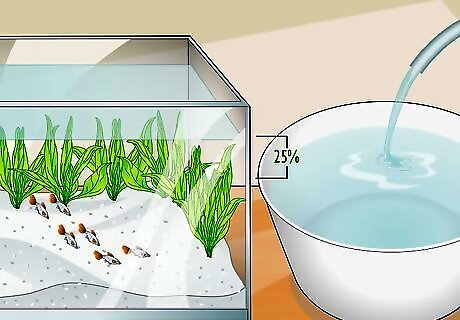
Fill up a bucket with about the same amount of water as 25% of your tank's capacity. Then follow package directions for your de-chlorinator. This will make the water safe for your fish whilst we do everything else. It is very important to dechlorinate your water, otherwise, it could poison your fish.
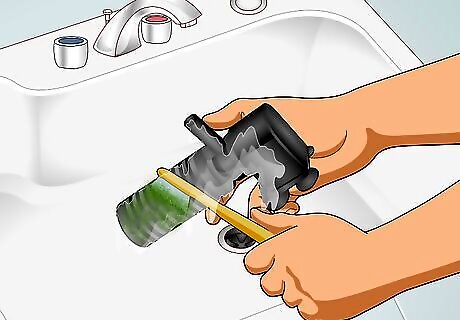
Clean your filter. The outside of your filter collects big bits of debris, which without cleaning can produce more algae. Take it out and scrub it with a toothbrush or rinse in dechlorinated water. You might have some pest snails in the as well, so get them out or squish them. any other pest snails in the tank can be removed or squashed, however if you haven't got loads then they can get rid of some of your algae. It's all a matter of preference.
Cleaning the Tank
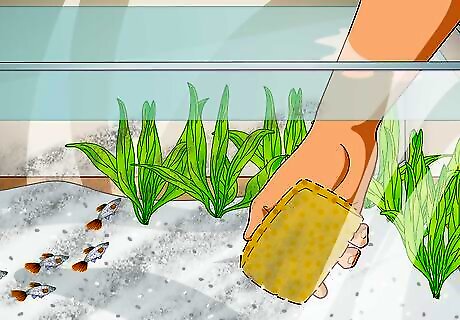
Get your scrubbing tools and get the algae off of the aquarium glass. When scrubbing at the bottom of the tank, if you have sand as your substrate then be careful not to catch any sand or snails in your sponge as this will scratch your glass. If you have green spot algae then even the abrasive side of a sponge might not work If it won't come off you could consider using a razor blade. Be careful not to scratch yourself if you are using the blade.
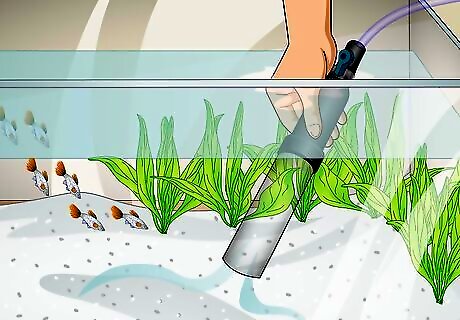
Siphon out the water. Different siphons work differently so make sure that you use yours correctly. You need to remove about 25% of the water into a bucket, so, if you have a big tank, it might take a bit of time, but stay focused, as it will be worth it. If you have slow fish such as Corydoras you may want to push a sponge into the siphon so that they don't get sucked in. If you don't want to disturb your plants, then hold it above the substrate. Alternatively, you can waft the plant and all the grime will come out, siphon the water around it.
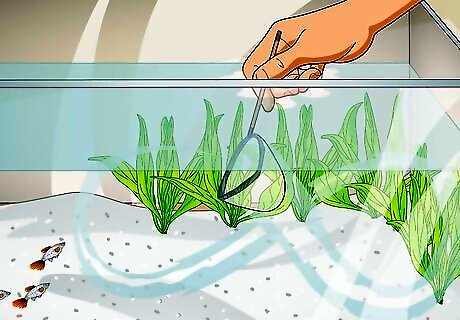
Grab a net and sway it back and forth in the tank it a figure of 8 motion. This should catch big bits of debris. It could take a couple of minutes. Make sure not to catch fish in your net or uproot your plants.
Doing General Maintenance
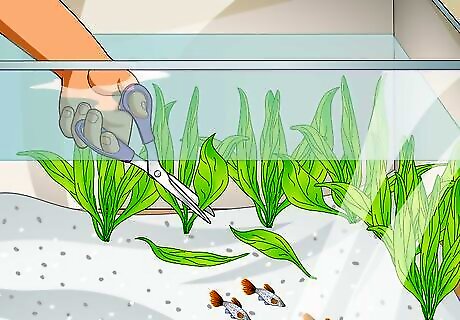
Trim your plants. If your plants are getting overgrown it's a good idea to trim them. Once trimmed you can put whole plants into another tank or just chuck the trimmings in the bin. Live plants are always the best option but make sure to scrub any fake plants if you have them.
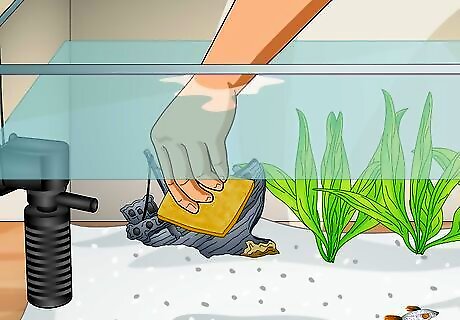
Scrub your ornaments. In your siphoned water grab a sponge and clean any ornaments that you may have in your tank. This is important because that is where a lot of bad algae grows and spreads into your tank's water. If you have pebbles as your substrate then you could scrub them with an all natural bamboo toothbrush. However if you have gravel then just scrub it with a sponge.
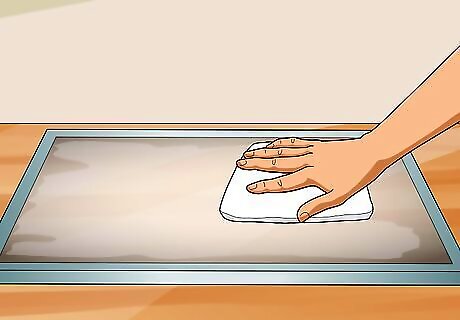
Wipe the lid of your aquarium. This is a very important step that could be fatal to your fish if you miss it. because of the evaporated water the inside lid (if you have one) collects water and if not dried leads to mould, which could harm your fish.
Completing the Clean
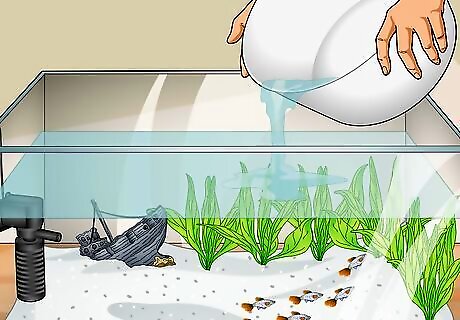
Pour the clean, de-chlorinated water into your tank. You can do this with a jug, a siphon or just pour it in, slowly. be careful not to disturb aquatic life, the plants, or the substrate. you can alternatively siphon the water back in.
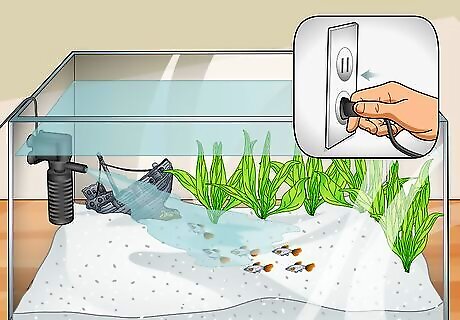
Turn the aquarium power back on. Make sure that all the components of your tank are in tack and working. Any debris still floating around will get filtered out of the water. If there are still lots of big debris then you can net them up.
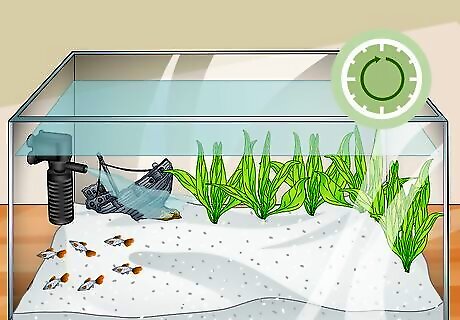
Wait. It could take up to two hours for the debris to filter out depending on the size of your tank. Now you just have to be patient. After this step, your tank will look gorgeous, and clean. All of the hard work definitely pays off here!
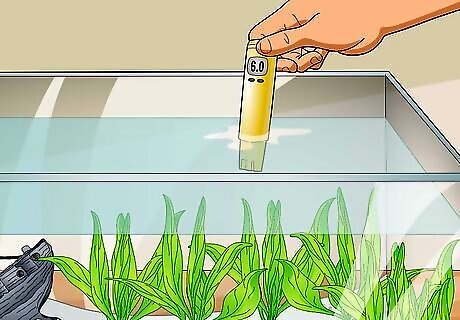
Check your water parameters. This is important because you have just put new chemicals into the water. That is also the reason why you should not change more than 50% of your tank's water at any one time. It could potentially kill the fish if the parameters are too out of whack.
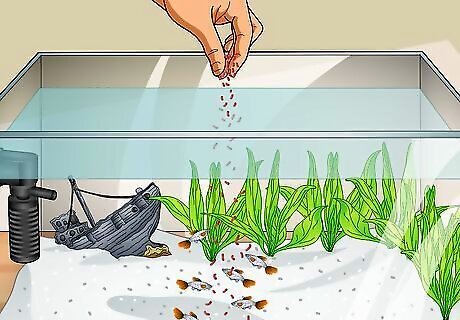
Give your fish a treat. It can be stressful for your fish when you are cleaning their home, so thank them for there patience with some Bloodworms or Daphnias, as fish love these. It is also a good idea to monitor your fish for a couple of days after clean your tank, just to check that they are okay.


















Comments
0 comment